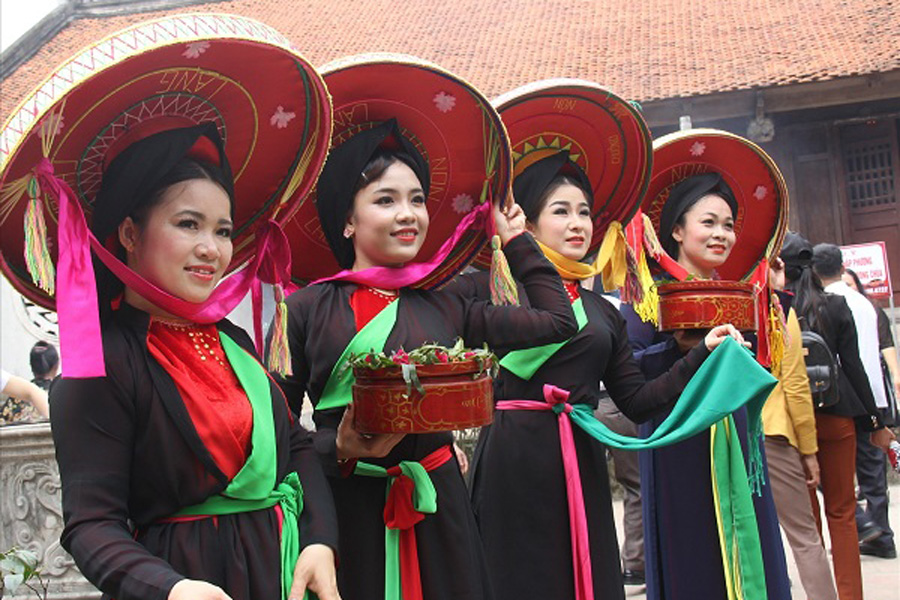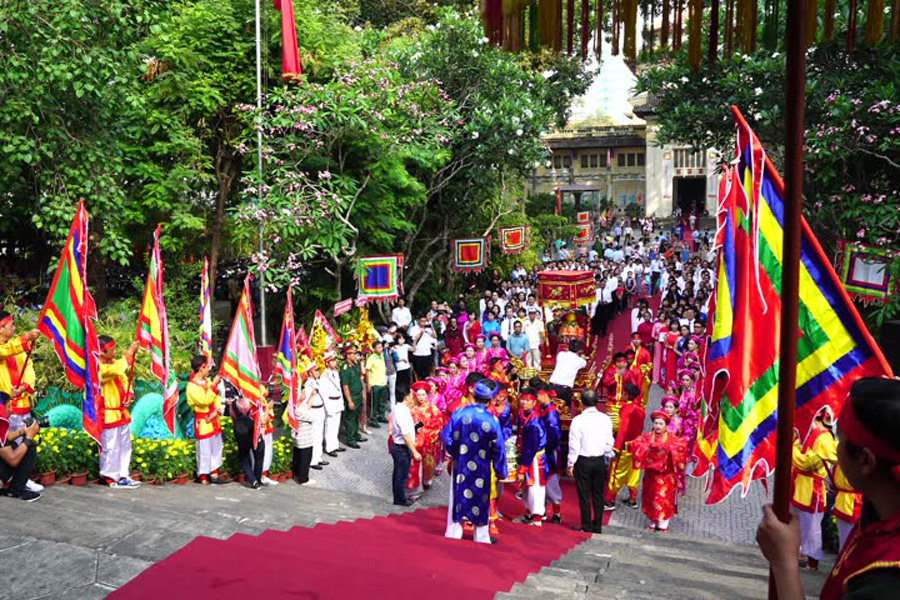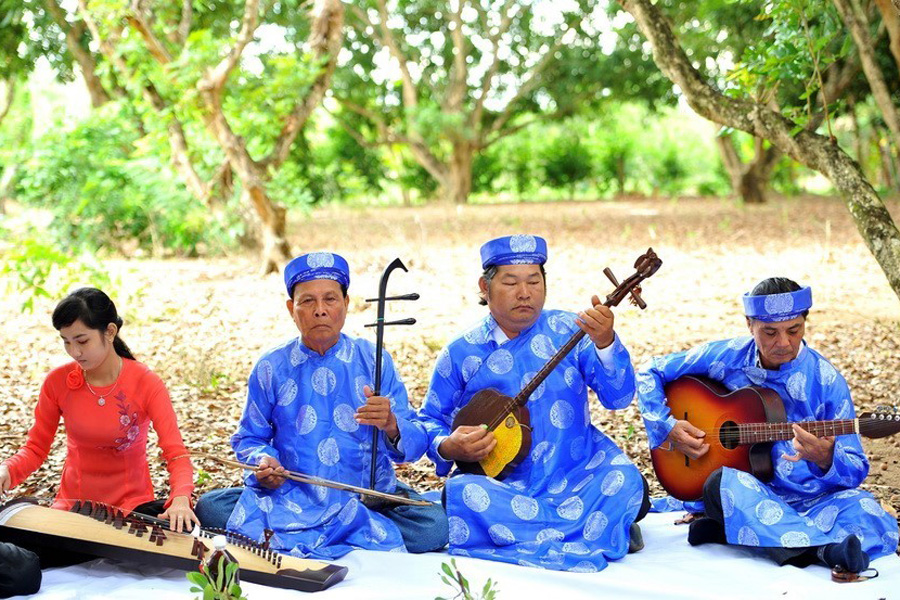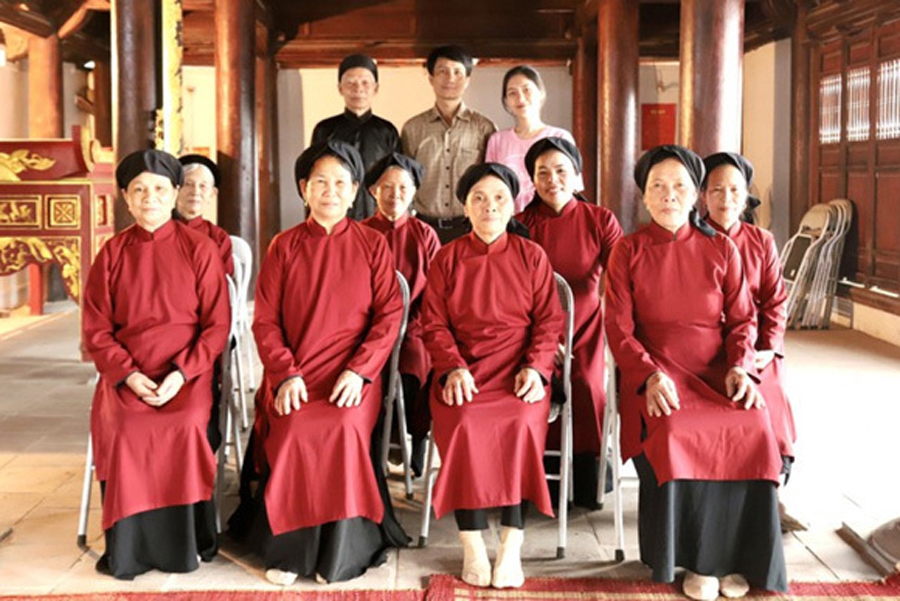
Vietnam is home to a rich cultural heritage, with several traditions recognized by UNESCO as intangible cultural treasures. These include ancient practices, unique performances, and traditional crafts that reflect the nation's diverse history and cultural identity. From the art of water puppetry to the ceremonial practices of the Muong and Tay ethnic groups, Vietnam's UNESCO-recognized intangible cultural heritage showcases the country's deep-rooted cultural significance and its ongoing efforts to preserve these remarkable traditions.

Hue Royal Court Music festival
Historical Significance:
Nha Nhac has a rich history that traces its origins to the royal courts of Vietnam. Its roots can be found in the Ly Dynasty (1010-1225) and continued to flourish during the Tran (1225-1400) and Le (1428-1788) dynasties. As the official music of the imperial courts, Nha Nhac played a crucial role in various court ceremonies, religious rituals, and official events.
Musical Elements:
The musical ensemble of Nha Nhac is characterized by a diverse array of instruments, each contributing to the rich tapestry of sound. String instruments like the dan tranh and dan nguyet, along with wind instruments such as flutes and percussion instruments like drums and wooden bells, create a harmonious blend of melodies and rhythms. The music is known for its sophistication, precision, and the seamless integration of various instruments.
Cultural Significance:
Nha Nhac holds cultural significance as a symbol of Vietnam's artistic achievements and refined courtly traditions. Beyond its musical elements, Nha Nhac performances often include dance, elaborate costumes, and poetry, creating a multi-sensory experience. The art form reflects the cultural identity and social hierarchy of the Vietnamese court.
Preservation Efforts:
Recognizing the need to preserve this invaluable cultural heritage, efforts have been made to document, teach, and promote Nha Nhac. Educational programs, workshops, and cultural institutions dedicated to the preservation of traditional arts have played a vital role in keeping Nha Nhac alive. Various initiatives aim to raise awareness and engage the younger generation in the appreciation and practice of this art form.
UNESCO Recognition:
In 2008, Nha Nhac was inscribed on the UNESCO Representative List of the Intangible Cultural Heritage of Humanity. This recognition not only celebrates the cultural significance of Vietnamese Court Music on the global stage but also brings attention to the importance of safeguarding and transmitting this tradition to future generations.

Quan Ho Bac Ninh folk songs
Historical Significance:
Quan Ho Bac Ninh folk songs have a rich historical significance, tracing their roots to the Red River Delta region in northern Vietnam. Originating in the 13th century, these traditional songs were initially sung during communal exchange meetings, reflecting the cultural and social practices of the local communities.
Musical Elements:
Quan Ho features distinctive antiphonal singing, involving alternating verses between female and male singers or groups. The dialogues, sung in a call-and-response manner, create a unique musical conversation. The songs are accompanied by traditional instruments, including the dan gao (a two-stringed lute) and the dan nhi (a bowed string instrument).
Cultural Significance:
These folk songs are deeply ingrained in the cultural identity of Bac Ninh province. Quan Họ is often associated with various rituals, festivals, and community events, serving as a form of cultural expression that reflects the values, emotions, and everyday experiences of the local people. The practice has also been linked to traditional customs related to courtship and marriage.
Preservation Efforts:
Efforts to preserve Quan Ho Bac Ninh folk songs have been underway to safeguard this unique cultural heritage. Various initiatives, including educational programs, documentation projects, and cultural events, aim to transmit the knowledge and skills associated with Quan Ho to younger generations. These efforts help ensure the continued vitality of this traditional art form.
UNESCO Recognition:
Quan Ho Bac Ninh folk songs were inscribed on the UNESCO Representative List of the Intangible Cultural Heritage of Humanity in 2009. This recognition underscores the global significance of Quan Ho and emphasizes the need for international cooperation in preserving and promoting this unique cultural tradition.
You may also like: Discover the Magic of Quan Ho Folksongs: A Cultural Journey to Bac Ninh

Giong festival of Phu Dong and Soc temples
Historical Significance:
The Giong Festival of Phu Dong and Soc Temples is a traditional Vietnamese festival with deep historical roots. It commemorates the mythical hero Saint Giong, a symbol of patriotism and national defense in Vietnamese folklore. The festival is celebrated in Phu Dong and Soc temples located in Hanoi, Vietnam.
Cultural Elements:
The festival is marked by vibrant and elaborate rituals, processions, and performances. The highlight is the "hat bo," a ritual singing and chanting performance, and the "len dong" ceremony, during which mediums go into a trance to channel the spirit of Saint Giong. The festival also features traditional martial arts performances, including the "xoan singing" and "quan ho" folk songs.
Cultural Significance:
The Giong Festival is a significant cultural event in Vietnam, emphasizing the importance of heroism, patriotism, and the spirit of national unity. It reflects the cultural values and historical pride associated with the legendary figure of Saint Giong. The festival serves as a means of connecting the community with its cultural heritage and reinforcing the sense of identity and solidarity.
Preservation Efforts:
Efforts have been made to preserve and promote the Giong Festival, including educational programs, cultural events, and documentation initiatives. These endeavors aim to transmit the traditions and rituals associated with the festival to younger generations, ensuring the continued vitality of this cultural celebration.

Hung kings festival in Phu Tho
Historical Significance:
The Worship of Hung Kings in Phu Tho has profound historical significance for the Vietnamese people, as it commemorates the Hùng Kings, considered the legendary founders of the nation. The Hung Kings are believed to have played a crucial role in establishing the ancient state of Van Lang, dating back to the third millennium BCE.
Cultural Elements:
This cultural practice involves a series of elaborate rituals and ceremonies held at the Hùng Temple complex in Phú Thọ province. These ceremonies include traditional music, dance performances, and elaborate processions. Offerings are made to honor the Hùng Kings, emphasizing filial piety and a deep connection to ancestral heritage.
Cultural Significance:
The Worship of Hung Kings is a symbol of national identity and pride for the Vietnamese people. It reinforces the cultural values of respect for ancestors, gratitude for the nation's foundation, and a sense of continuity between past and present. The annual festival fosters a strong sense of community, as people from different regions come together to participate in the celebrations.
Preservation Efforts:
Preservation efforts for the Worship of Hung Kings include ongoing initiatives to safeguard the rituals, educate the younger generation about their cultural heritage, and maintain the Hung Temple complex. These efforts aim to ensure the continued practice of this tradition and its transmission to future generations.
UNESCO Recognition:
This recognition highlights the global importance of this cultural practice and emphasizes the need for its protection and promotion.

Don ca tai tu musical instrument
Historical Significance:
The art of Don ca tai tu music and song in southern Vietnam has a deep historical significance, dating back to the 19th century. It originated in the Mekong Delta and reflects the cultural identity and heritage of the southern region.
Musical Elements:
Don ca tai tu features a rich combination of instrumental and vocal performances. It typically includes traditional instruments such as the đàn tranh (16-string zither), dan bau (monochord), and dan nguyet(moon-shaped lute). The music is often accompanied by poetic lyrics, and performances showcase improvisation, making each rendition unique.
Cultural Significance:
This art form holds cultural significance as a representation of the unique musical traditions of southern Vietnam. Don ca tai tu serves as a means of cultural expression, storytelling, and community bonding. It has been an integral part of social gatherings, festivals, and religious ceremonies, contributing to the preservation of local cultural heritage.
Preservation Efforts:
Efforts to preserve the art of Don ca tai tu include educational programs, documentation projects, and initiatives to promote and transmit the skills associated with this traditional music. These preservation efforts aim to ensure the continued vitality of the art form and its recognition both nationally and internationally.
UNESCO Recognition:
The art of Don ca tai tu music and song in southern Vietnam was inscribed on the UNESCO Representative List of the Intangible Cultural Heritage of Humanity in 2013. This recognition highlights its cultural importance and contributes to the global awareness of the need to safeguard and promote this traditional musical art form.

Phu Tho Xoan singers
Historical Significance:
Xoan singing is a form of Vietnamese ceremonial singing that dates back to the Hung Kings era, around 4,000 years ago. It is closely associated with the worship of the Hung Kings and considered a significant cultural and spiritual practice in the Phu Tho province.
Musical Elements:
Xoan singing involves a combination of song, dance, and rituals. It is traditionally performed during the first two months of the lunar new year in sacred spaces such as temples. The art form features distinct melodies, rhythms, and lyrics that are specific to each ritual and context.
Cultural Significance:
Xoan singing is not only a form of entertainment but also a religious practice. It plays a vital role in the spiritual life of the community, connecting people with their cultural and historical roots. The singing is often associated with rituals dedicated to the Hung Kings, embodying a sense of communal identity and continuity.
Preservation Efforts:
Due to various factors, including urbanization and changing cultural practices, Xoan singing faced a decline in the 20th century. Efforts have been made to preserve and revitalize this traditional art form, including educational programs, documentation projects, and performances aimed at fostering appreciation and understanding.
UNESCO Recognition (2017):
Xoan Singing of Phu province was inscribed on the UNESCO Representative List of the Intangible Cultural Heritage of Humanity in 2017. This recognition acknowledges the cultural significance of Xoan singing and aims to support its safeguarding and transmission to future generations.
You may also like: Music of the Royal Court of Hue - Cultural Treasure of the Ancient Capital